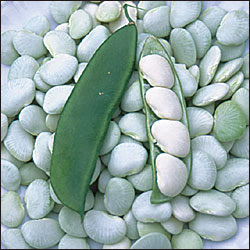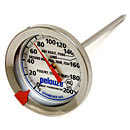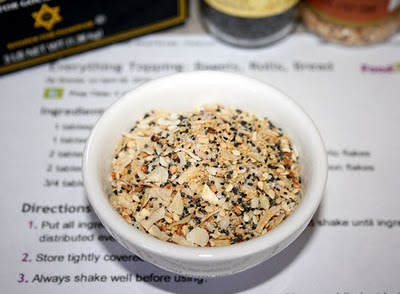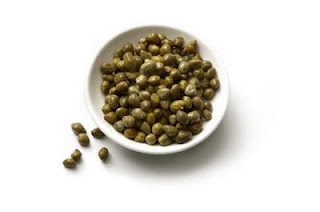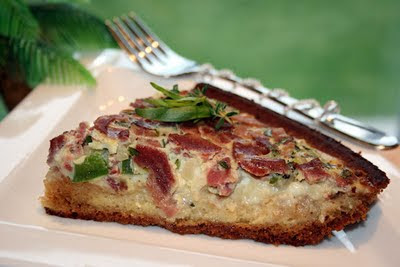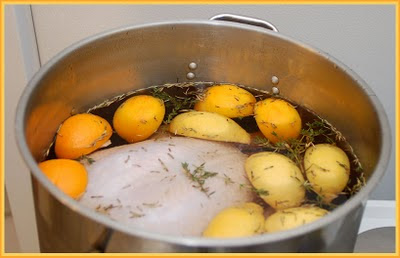
Photo courtesy of
Feldstein PhotographyBrine is essentially a salt water bath for meat. Turkey is the most common, but you can brine chicken, fresh ham or even shrimp. Brining makes changes in the cellular structure of the meat through the process of osmosis.
Osmosis, by definition is the act of a liquid, usually water that passes through a thin, semi-permeable membrane to equalize the solvent concentration on both sides of the membrane.
Meat contains a lot of water, but only a small amount of salt, so when the meat is submerged in salt water, the solvent concentration is out of balance. To balance it again, the water from the meat moves through the skin and out of the bird, while the salt and any flavors in the brine, will be pulled into the meat.
At first it seems as if we're going in the wrong direction, as we would have salty, dry meat, if cooked right now.
But, we'll give it some time and let the salt do its duty.
The salt, now in the meat, will begin to attach itself to the muscle proteins. The fibers begin to weaken, swell and separate enough to allow more water to be stored in them. So, osmosis happens again to balance out the new concentration and the water in the brine begins to refill the fibers.
When these chemical changes have been made, the meat will have absorbed approximately 10% more water and salt from its original weight.
The changes aren't instant; however, so brining must be done in advance of when you want to roast the meat.
I like to do the brine the day before and refrigerate the meat overnight.
Brined meat will cook faster than if it had been roasted without the brine. Make sure to use a meat thermometer and check the temperature at the earliest recommended cook time. But even if your bird does cook longer than needed, it will still taste moist and tender because of the broken down muscle fibers and the additional water they're holding onto. ;)
Coarse kosher salt is the preferred salt for brining, but table salt (iodine-free) or sea salt can be used. Or, try a combination of flavored sea salt and kosher salt!
Generally, 1 cup of kosher salt for every gallon (four quarts) of water is recommended. Apple or orange juice and flavored vinegars, such as apple cider vinegar or pineapple vinegar can be substituted for a portion of the water.
To balance the salty water, a sweetener should be a part of the brine. Use sugar, brown sugar, molasses, honey or even agave nectar.
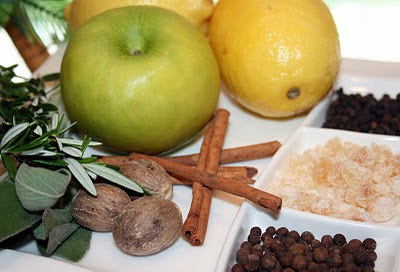
Seasonings, or aromatics, are used both in the brine and roasted inside the cavity of the bird. Since only the essence of the seasonings is small enough to pass through the skin and into the meat, your options are wide open. Whole spices and fresh herbs are excellent for brining. No additional salt is needed, but try things like fresh peppercorns, allspice berries, cloves, rosemary, sage, thyme, garlic or ginger. Apples and citrus fruits make great additions to the brine.
Because you'll be marinating a whole bird, you'll need something big enough to hold it. I've used a brining bag and a (very) clean cooler in the past, but it was really only a small investment, about $8, to purchase a 5 gallon bucket with a lid.
The process is pretty simple and I like the fact that it's done the day before. It takes a bit of stress off on the day of the holiday, when so many other things have to be prepped.
I like to buy a fresh, organic turkey, so I don't have to worry about thawing first, but frozen works just as well.
Prepare the brine and then chill it before adding to the bird. Clean out the bird, rinse well and then submerge in the brine with additional cold water. Refrigerating the whole mess can be tricky though. You want to keep the brining bird chilled at 40° F and finding room in the refrigerator for a 5 gallon bucket is no easy task. We have a fridge in the garage and we can take out the bottom shelf to make the bucket fit. But luckily for us, the weather around the holiday season is usually 30° or less, so we've also just put the bucket in the garage overnight.
When it's time to roast the bird, remove from the brine (discard brine) and rinse it really well, inside and out. Pat dry and place in roasting pan.
Now is the time to add the aromatics. The apples, citrus fruits and fresh herbs can be added to the cavity of the bird, then roast immediately. :)
My favorite method of roasting is the high-heat sear at 500° F in the beginning, to create a nice crust over the bird that will lock in the moisture. Then reduce the heat to 350° and continue roasting until the thermometer reaches 160°. Tent the bird with foil and allow it to rest for 15 minutes before carving.

Photo courtesy of
Feldstein PhotographyThen get ready to enjoy the tastiest, juiciest turkey ever!
My favorite brining recipe, so far... is from Alton Brown's Good Eats show.
Alton Brown's Brined Turkey1 (14-16 lb) whole turkey, frozen
For the Brine:
1 cup kosher salt
1/2 cup light brown sugar
1 gallon vegetable stock
1 tablespoon black peppercorns
1 1/2 teaspoons allspice berries
1 1/2 teaspoons chopped candied ginger
1 gallon water, heavily iced
For the Aromatics:
1 red apple, sliced
1/2 onions, sliced
1 cinnamon stick
1 cup water
4 sprigs rosemary
6 leaves sage
canola oil
2 to 3 days before roasting: Begin thawing the turkey in the refrigerator or in a cooler kept at 38 degrees F.
Combine the vegetable stock, salt, brown sugar, peppercorns, allspice berries, and candied ginger in a large stockpot over medium-high heat. Stir occasionally to dissolve solids and bring to a boil. Then remove the brine from the heat, cool to room temperature, and refrigerate. The night before you'd like to eat: Combine the brine, water and ice in the 5-gallon bucket. Place the thawed turkey (with innards removed) breast side down in brine. If necessary, weigh down the bird to ensure it is fully immersed, cover, and refrigerate or set in cool area for 8 to 16 hours, turning the bird once half way through brining. Preheat the oven to 500 degrees F. Remove the bird from brine and rinse inside and out with cold water. Discard the brine. Place the bird on rack of roasting pan and pat dry with paper towels. Combine the apple, onion, cinnamon stick, and 1 cup of water in a microwave safe dish and microwave on high for 5 minutes. Add steeped aromatics to the turkey's cavity along with the rosemary and sage. Tuck the wings underneath the bird and coat the skin liberally with canola oil. Roast the turkey on lowest level of the oven at 500 degrees F for 30 minutes. Insert a probe thermometer into thickest part of the breast and reduce the oven temperature to 350 degrees F. Set the thermometer alarm (if available) to 161 degrees F. A 14 to 16 pound bird should require a total of 2 to 2 1/2 hours of roasting. Let the turkey rest, loosely covered with foil or a large mixing bowl for 15 minutes before carving.

